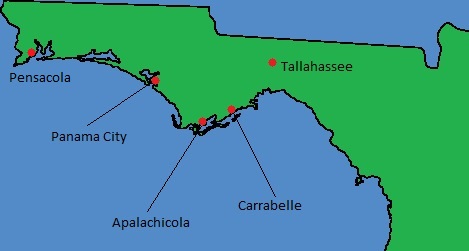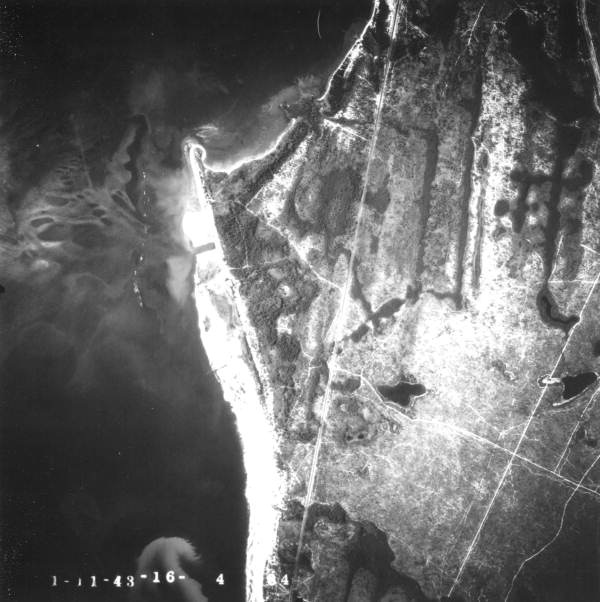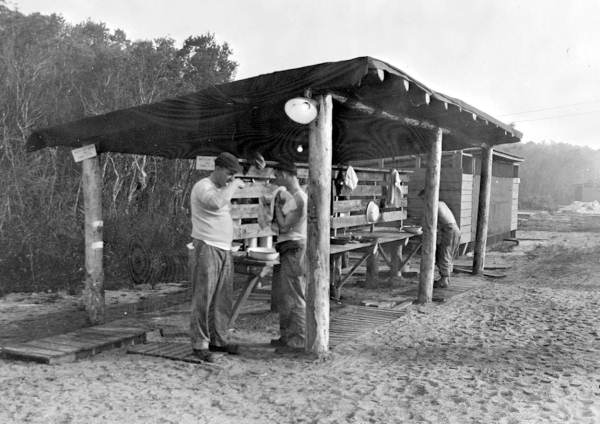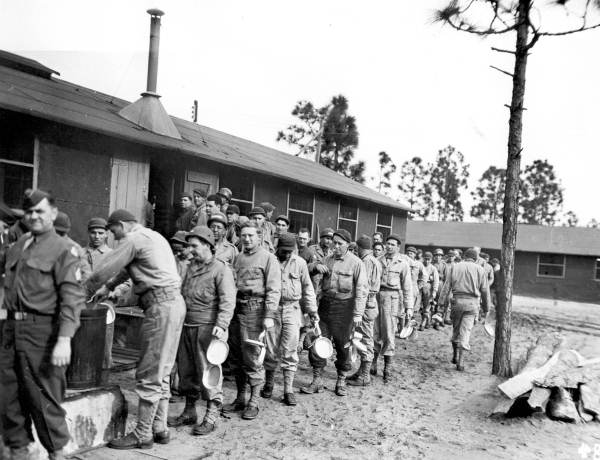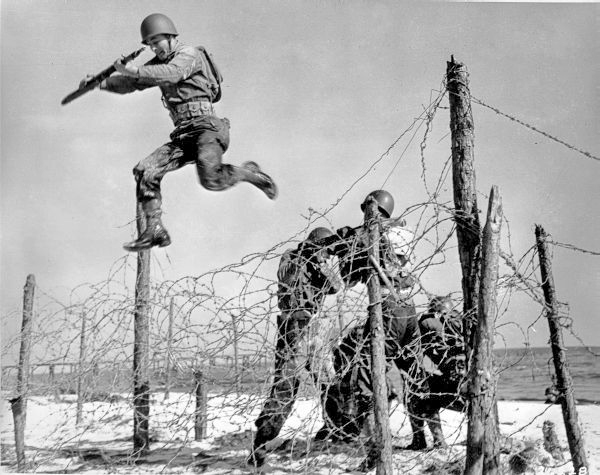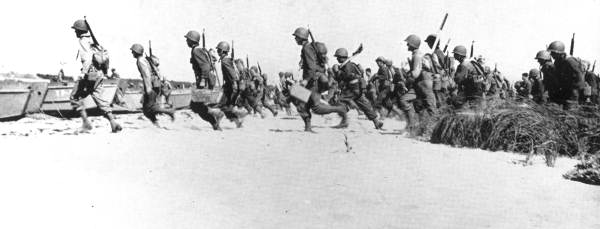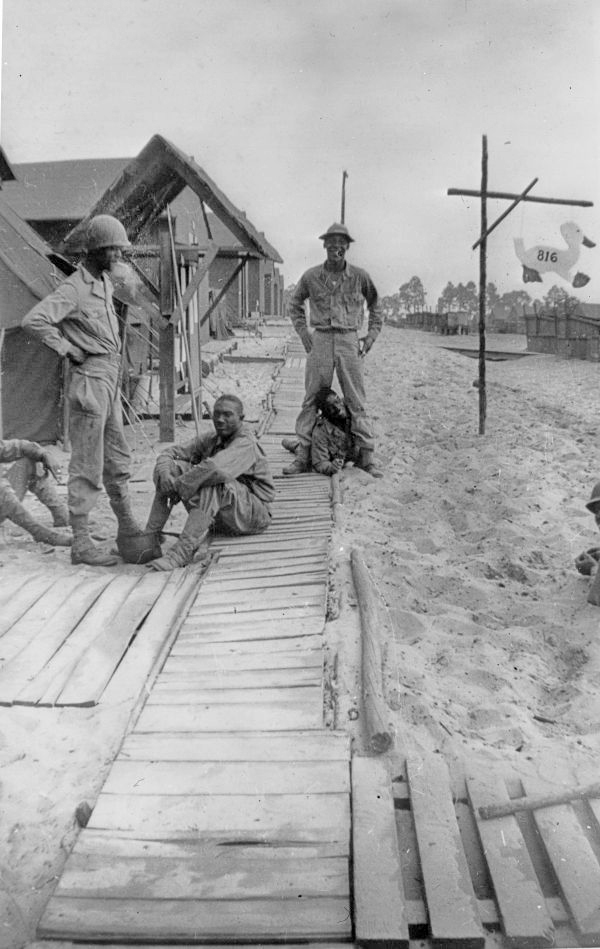Description of previous item
Description of next item
Preparing for D-Day: Camp Gordon Johnston near Carrabelle
Published June 6, 2014 by Florida Memory
Today marks the 70th anniversary of the 1944 D-Day invasion, in which over 100,000 Allied troops stormed the beaches along the coast of Normandy, France, making it the largest seaborne invasion in history. Some of the troops arrived by parachute, but the vast majority waded ashore after being transported in specially constructed vehicles. The Army and Navy had been planning for amphibious invasions like the one at Normandy for some time, and Camp Gordon Johnston near Carrabelle, Florida was one of the sites selected for training troops to do the job.
Carrabelle, a small town southwest of Tallahassee in Franklin County, was little more than a small fishing village when military leaders decided to use the terrain around it as an amphibious training base. A small military installation called Camp Carrabelle was already located here, but it would require major expansion to suit the Army’s needs. Once the site was selected, the federal government quickly bought up 10,000 acres of land and leased an additional 155,000 acres, forming a base with nearly twenty miles of frontage on the Gulf coast between St. George Island and Alligator Point, including Dog Island and the beaches near Carrabelle. In a few weeks contractors were already at work on the thousands of buildings and other structures needed to complete the training center. The new installation was named for Gordon Johnston, an Alabama native who served in the Spanish-American War and World War I and received the Medal of Honor in 1910.
Camp Gordon Johnston quickly developed a reputation for its tough conditions. For many of the camp’s first inhabitants, few of whom were actually from Florida, the contrast between the Florida of postcards and travel literature and the Florida they experienced was incredible. Because they had been thrown together in such short order to accommodate the troops, the barracks lacked dependable heating and in most cases had no floors. At first, the camp had no mess halls, and soldiers were obliged to eat their meals outdoors using their mess kits.
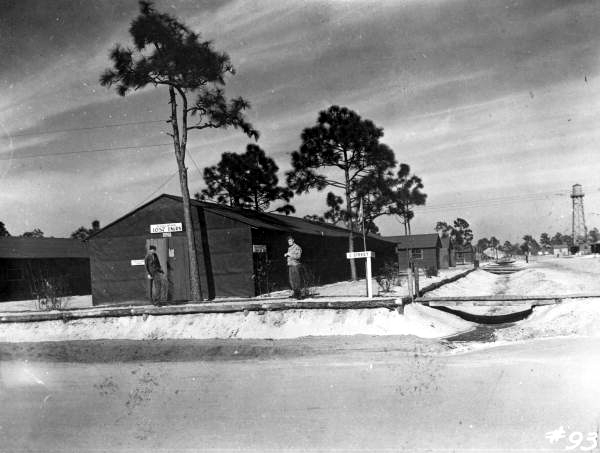
Barracks at Camp Gordon Johnston. Notice that the walls are little more than tar paper on a wooden frame (circa 1943).
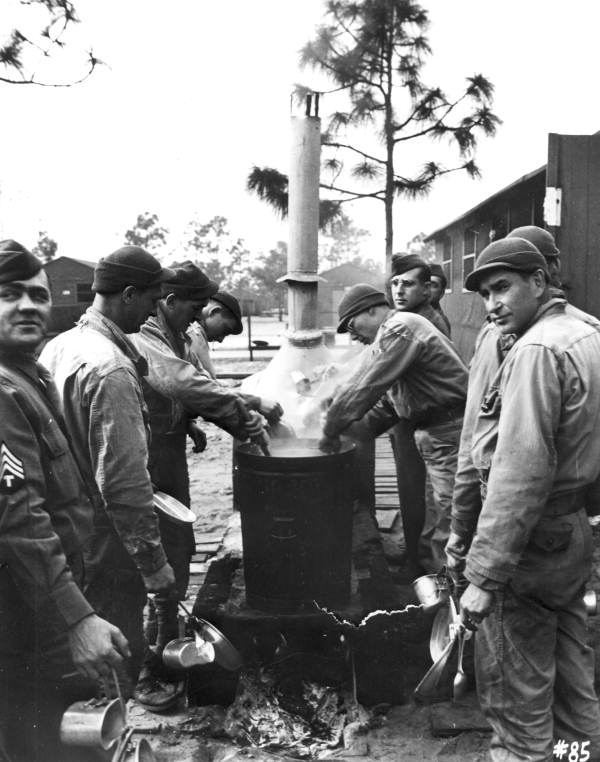
Camp residents wash their mess kits in a pot of boiling water after a meal at Camp Gordon Johnston (circa 1943).
The challenges of the terrain were no cakewalk, either. Sure, there was a beach, but as residents of the camp explained, there were also insects, snakes, lizards, mud, drenching rain, and stifling heat. Sergeant Bill Roth captured the feelings of the men toward Camp Gordon Johnston’s steamy conditions in a poem that appeared in one of the first issues of the camp’s newspaper, The Amphibian.
The rattlesnake bites you, the horsefly stings,
The mosquito delights you with his buzzin wings.
Sand burrs cause you to jig and dance
And those who sit down get ants in their pants.
The heat in the summer is one hundred and ten
Too hot for the Devil, too hot for the men.
Come see for yourself and you can tell
It’s a helluva place, this Carrabelle.
Living conditions nothwithstanding, soldiers at Camp Gordon Johnston found plenty of ways to entertain themselves during their stay. Carrabelle itself might not have been the most active metropolis, but GI’s could have a pleasant time reading in the camp’s library, fishing from one of the nearby piers, attending a USO-sponsored dance, or catching the latest movie at the camp’s theater. By the end of the war, the post featured five theaters, three service clubs for enlisted men, clubs for both commissioned and non-commissioned officers, baseball, baketball, and boxing leagues, and six chapels to minister to the spiritual needs of the camp residents. Tallahassee was the nearest city of any size, but it was already crowded with GI’s stationed at Dale Mabry Field. Soldiers reported difficulties even finding a room at the local hotels, but that didn’t stop them from trying. The Lee Bus Line and later a special passenger railroad carried residents of Camp Gordon Johnston to and from Tallahassee regularly.
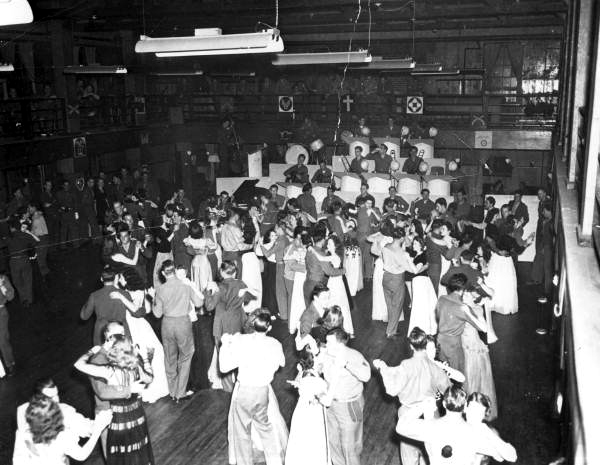
Soldiers and visitors dance to music from a live band at one of Camp Gordon Johnston’s dance halls (circa 1944).
Training for amphibious warfare was the initial purpose of Camp Gordon Johnston, but as the war continued the Army began shifting more responsibility for this kind of tactic to the Navy. In 1943 the base was re-purposed as an Army Service Force Training Center, where small companies could be trained to operate boats and amphibious trucks for the Army’s “island-hopping” campaign in the Pacific. Engineers charged with constructing, repairing, and maintaining ports also trained at the center, and starting in 1944 small numbers of German and Italian prisoners of war were sent there.
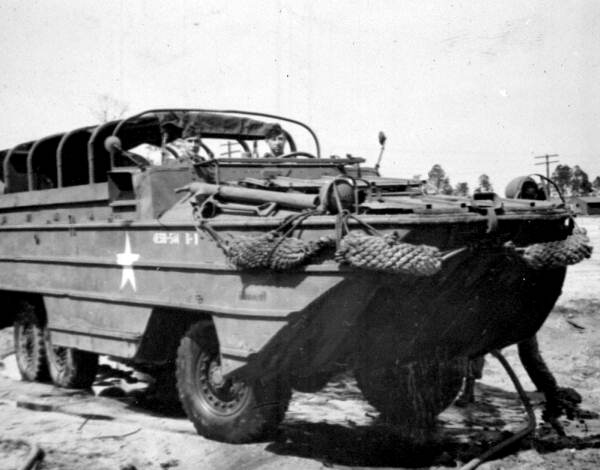
A GM manufactured amphibious vehicle called a DUKW, located at Camp Gordon Johnston. DUKW was a code describing the specifications of the vehicle. “D” stood for date (1942), “U” stood for amphibian, “K” indicated the vehicle was all-wheel drive, and “W” meant the vehicle had dual rear axles. Photo 1944.
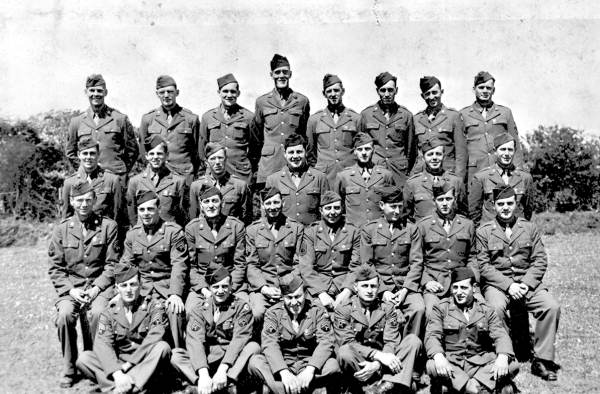
Company photo of the 1057th Engineer Port Construction and Repair unit at Camp Gordon Johnston (circa 1944).
A number of African-American troops resided at Camp Gordon Johnston during its tenure. For these men, many of whom were from the Northern U.S., entering the segregated world of the Florida Panhandle in the 1940s was a difficult transition. While white residents enjoyed the use of the camp’s guest house, library, and service clubs, black soldiers were not permitted to enter these facilities, nor was a segregated alternative provided until much later in the war. Moreover, Carrabelle and other nearby small towns were still in the grip of Jim Crow segregation laws, and tensions between the races at times broke out into violence.
When news of the Japanese surrender reached Camp Gordon Johnston in 1945, the effect was said to have rivaled the power of the atomic bomb. Concerts and parades marked the occasion, and the demand for beer was so high that bartenders reportedly were forced to serve it before it had even had time to chill. With the war over, the camp’s life came to a close as well. The base officially shut down in early 1946, and by 1947 the federal government had disposed of its land in the region.
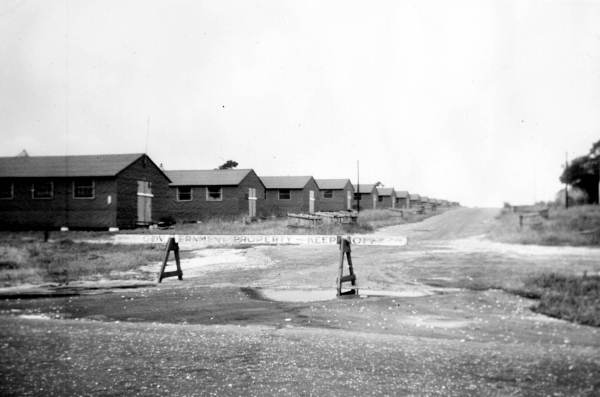
A barricade marked “Government Property – Keep Off” blocks the driveway to the barracks of Camp Gordon Johnston after it closed in 1946.
Little remains of Camp Gordon Johnston, but local citizens and former camp residents still gather from time to time to reminisce about what it was like to train in the sun, sand, and heat around Carrabelle. The Camp Gordon Johnston Association organizes these reunions in cooperation with the American Legion Post at Lanark Village and other community partners.
Learn more about the World War II era in Florida by searching the Florida Photographic Collection. Teachers and students, you’ll find useful resources on the subject in our learning unit.
Cite This Article
Chicago Manual of Style
(17th Edition)Florida Memory. "Preparing for D-Day: Camp Gordon Johnston near Carrabelle." Floridiana, 2014. https://www.floridamemory.com/items/show/295178.
MLA
(9th Edition)Florida Memory. "Preparing for D-Day: Camp Gordon Johnston near Carrabelle." Floridiana, 2014, https://www.floridamemory.com/items/show/295178. Accessed January 7, 2026.
APA
(7th Edition)Florida Memory. (2014, June 6). Preparing for D-Day: Camp Gordon Johnston near Carrabelle. Floridiana. Retrieved from https://www.floridamemory.com/items/show/295178

 Listen: The Latin Program
Listen: The Latin Program